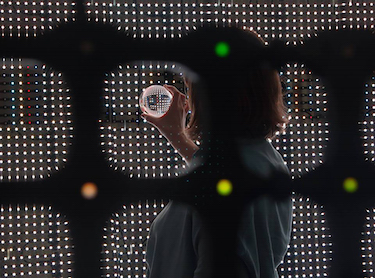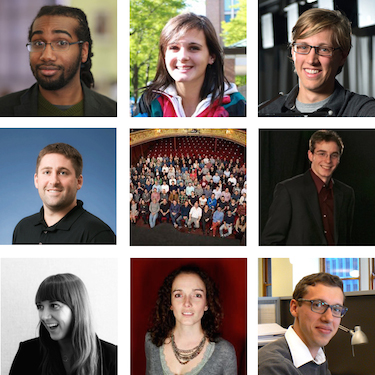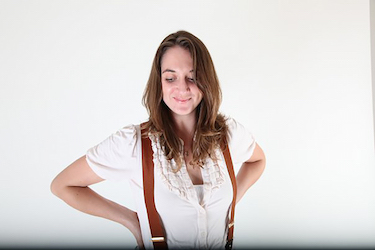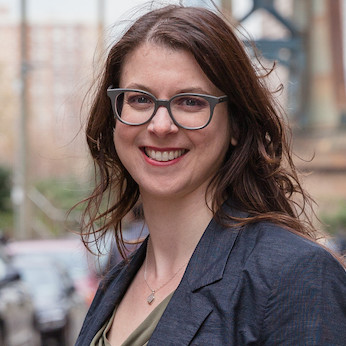Title: Experience Designer, Interactive AV & Systems Specialist
Company: ESI Design
Division: Technology & Media Group
Location: New York, NY
Overtime: Upon moving to NYC, Webster was fascinated with street cellars as a window into the belly of the city and how they affect the choreography of the streetscape. For her graduate thesis, she placed bulletproof glass in one, and set it to illuminate people’s faces as they walked by and light up brightly when stepped on.
Why You Need To Know Her: As a media architect of sorts at a top innovation and experience design firm, Webster gets to dream up elaborate AV showpieces. She is responsible for the conceptual technological requirements and communicating them to systems integrators.
What this means practically is that she estimates AV designs at a really, really high level, early on. She takes the functional requirements from the client and devises the technical requirements, before then reaching out to integrators to help with a more granular systems design.
And if that’s not impressive enough, she dabbles in product design, successfully raising over $50,000 in a Kickstarter for modular LED blocks, called Tangeez.
How She Got Here: After earning an architecture degree, and setting off for LA to work in production design, Webster realized she didn’t like the impermanence of a façade. She ended up designing and programming water fountains for Wet Design (picture Bellagio fountain style productions). She found programming water nozzles to be like programming dancers on a stage—an early influence with a recurrent thread through her life. Eventually, this led her to back to school to study interactive technology at NYU’s Interactive Telecommunications Program (ITP).
ITP was Webster’s first traditional AV-type experience, learning circuitry and working with projectors, yet always on an architectural scale. After, she spent a few years in San Francisco working with the artist Jim Campbell. They collaborated with a ballet company, developing modular LED panels for the dancers to interact with, programmed live by Webster. She had grown weary of San Francisco when ESI tracked her down, via connections at ITP.
The Girl Loves to Get Her Hands Dirty: As someone passionate about prototyping and testing things out, Webster shepherded a lab at ESI. It has become an integral part of the firm’s design process, supporting specific phases of work now, as well as a full time tech. “It’s really great that we recognize the value, and our clients recognize that value.”

Viewing Hardware as an Architectural Material: “It feels like you’re not plopping a screen on a the wall and just trying to spin information into people’s view, and really making it feel elegant and seamlessly woven into the rest of the built environment.”
Data Driven Pieces Are All the Rage: A lot of ESI’s work lately is generative in nature, involving software that is constantly refreshing. “Whether it’s for something that lives on the big TV in the back or something more abstract, it’s always trying to pull data and keep it fresh on its own,” she explained. The creative process involves hardware and software specialists working in tandem with game designers, unity developers, and creative technologists.
How She Doesn’t Allow Gender To Be an Issue: It’s a male dominated world, and not just an AV problem. “I think that it’s the same struggle that women have everywhere. You have to sort of establish your knowledge, and I don’t really focus on it or let it hold me back.”
She also gives a nod to ITP for teaching her to be comfortable being uncomfortable. You can’t be an expert in every software or piece of hardware, “But you can be comfortable knowing that through some research and some conversations, that you will become comfortable, and that you can jump into any new task, any new software, that you have the language and the knowledge of a breadth of systems to be able to jump into a specific one.”


